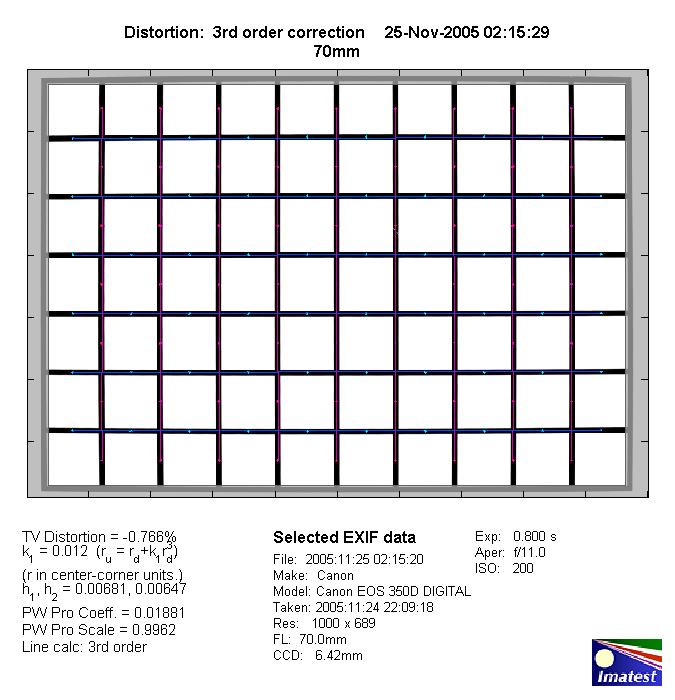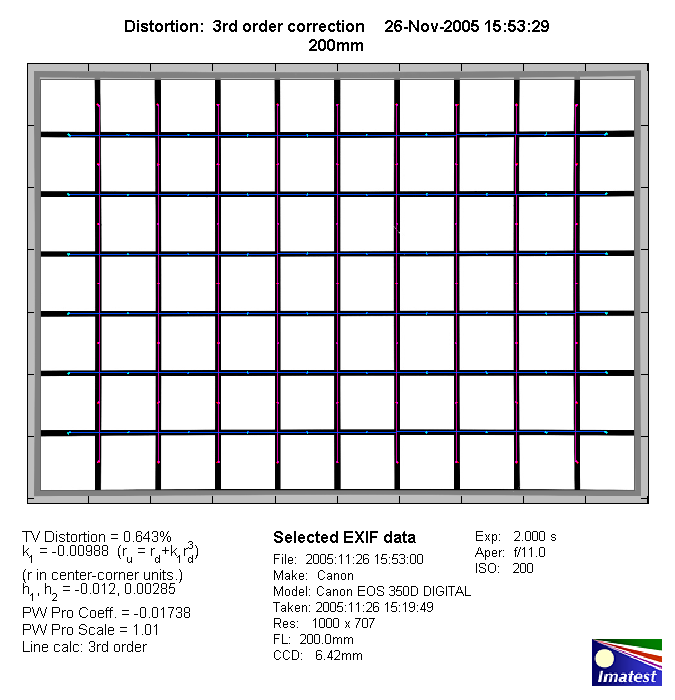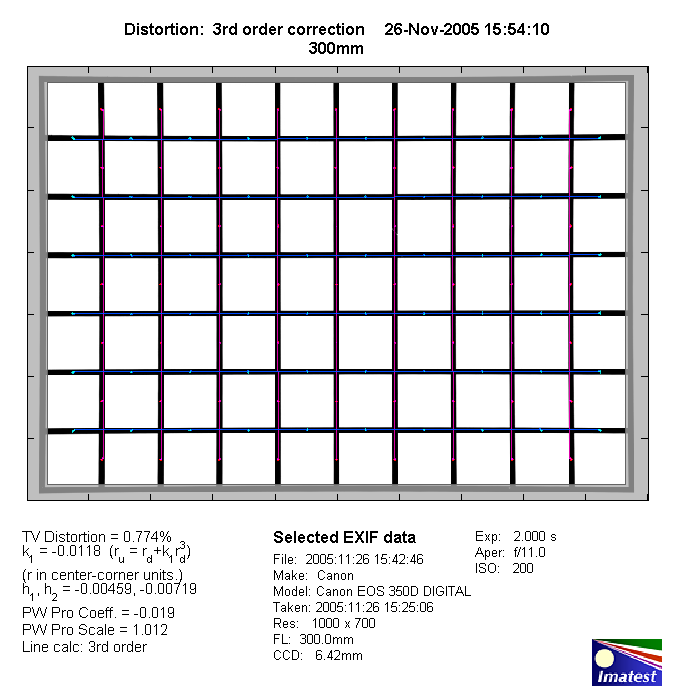|
Canon EF 70-300mm f/4-5.6 USM IS - Review / Test Report - Analysis |
|
Lens Reviews -
Canon EOS (APS-C)
|
|
Page 2 of 3
Distortion
The level of distortion is quite low throughout the zoom range. Measured at a distance
of 40x focal length there is slight barrel distortion at 70mm changing to slight
pincushion distortion at 200mm and 300mm.
70mm:

200mm:

300mm:

As usual you should probably expect more distortion towards closer focus distances.
Vignetting
Vignetting is very well controlled - at least on an APS-C DSLR which takes advantage
of the image center only (1.6x crop). Even at wide-open aperture it is nothing
to worry about in all but the most critical scenes. One stop down the issue disappears
to a negligible degree.

MTF (resolution)
As hinted in the introduction the lens features an UD (ultra-low dispersion)
element which is quite unusual for a consumer grade Canon lens. This special kind of glass
is usually only used in Canon L (professional grade) lenses.
In the lab the effect of the new design became pretty obvious with surprisingly
high resolution figures throughout the range. In fact the data was so impressive
that I was already wondering whether I had mixed up the RAW files with a
(supposedly) better lens.
The lens produced very good to excellent MTF figures. As to be
expected the performance is best at 70mm with excellent center and border quality
at all tested apertures. At 200mm and a little more so at 300mm there's a slight
decrease in resolution but the results stay easily within very good territory
reaching even excellent center figures at the respective performance peaks.
Compared to true L grade lenses the contrast level seems to be a tad
lower at 300mm. Nonetheless this is truly baffling for such an affordable lens.
Please note that the MTF results are not directly comparable across the different systems!
Below is a simplified summary of the formal findings. The chart shows line widths per picture height (LW/PH) which can be taken as a measure for sharpness.
If you want to know more about the MTF50 figures you may check out the corresponding Imatest Explanations
Chromatic Aberrations
The lens produced a varying but quite low degree of chromatic aberrations (color shadows at
harsh contrast transitions) at the image borders. The average CA pixel width remains well
below 1 pixel at all focal length so it's usually nothing to worry about.

|